-
Down the hole hammer method(DTH hammer)
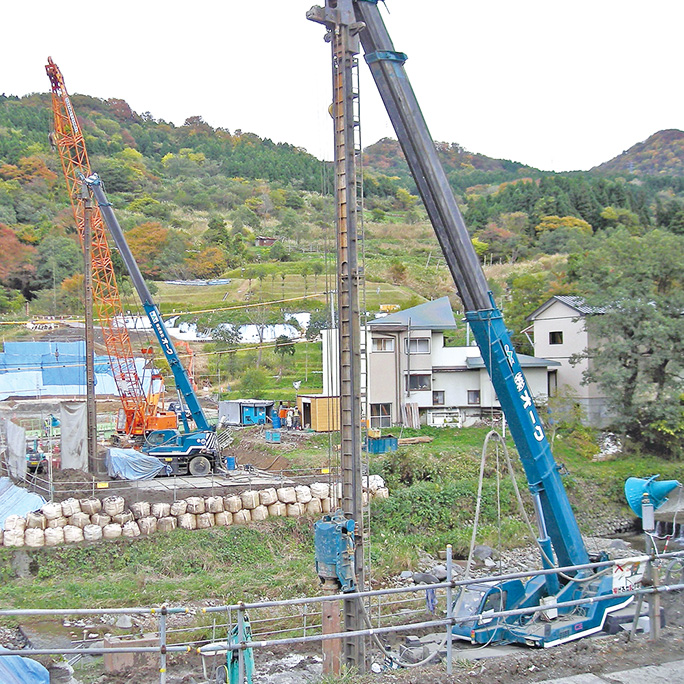
All the Oak’s down the hole hammer methods include OAK-DASH method for noise reduction.
More than 20 years of experience
Since its founding OAK has accumulated lots of experience in DTH Hammer as a specialized foundation construction company. We never stop developing and implementing new technologies to adapt to the needs of changing times.
Down the Hole Hammer (DTH Hammer) drills hard ground of bedrocks and layers of boulder stones swiftly and securely.
This method is a way to excavate hard grounds with boulders and bedrocks efficiently by repetitive piston shooting using compressed air created in the cylinder. The excavated soil is discharged above ground through pit mouth by air blow.
-
Oak-down the hole antinoise system of hammer
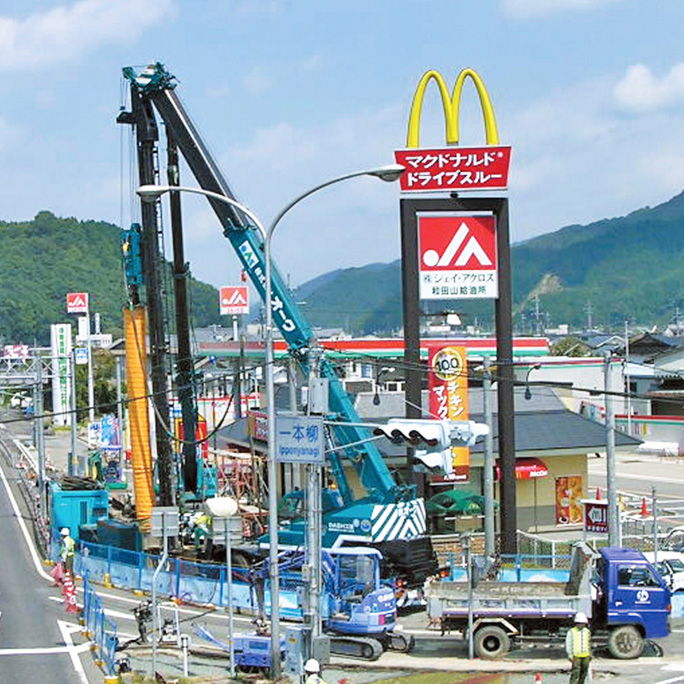
The original sound-proofing and sound-absorbing system diminishes the metal sound peculiar to pneumatic hammers.
Sound absorbing material loaded in the cavity cuts metal or hitting sound typical of pneumatic hammers by 8~15dB (internal investigation). The material filled in the relay rods also creates large sound-proofing effect. The antinoise hammers prove to be useful in cities or residential areas as well as in the construction sites operated at night.
-
Synchronized piling with pre-boring (SPP method)
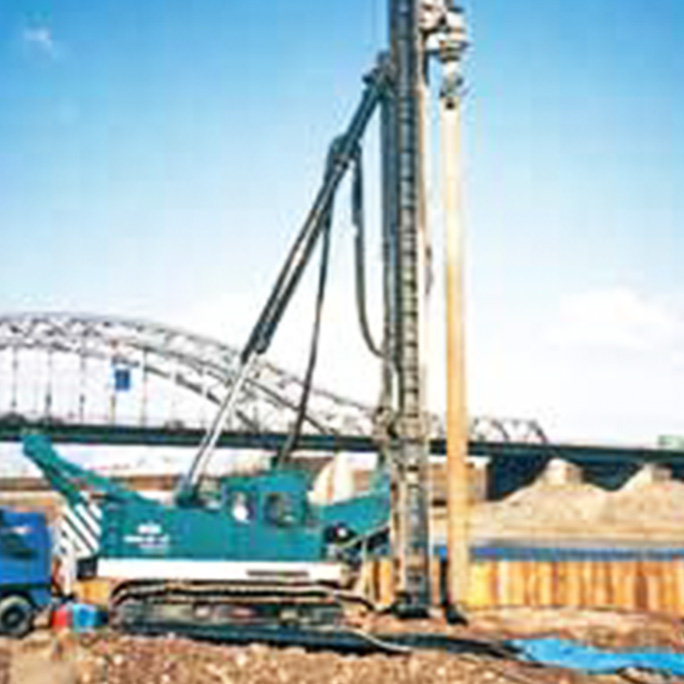
This method has solved the largest disadvantage of the conventional piling method: discontinuation of work due to the parts remained unexcavated or collapse of porous walls. The previous method comprises 3 processes whereas SPP Method has only one, which minimizes the construction period. Also, this method, in which effective width of steel sheet piles equals excavated hole diameter, leaving only little unneeded dug earth, reduces costs. SPP Method is a new method that enables excavation of any stratum and economical installation of steel sheet piles.
-
Vibratory hammer method
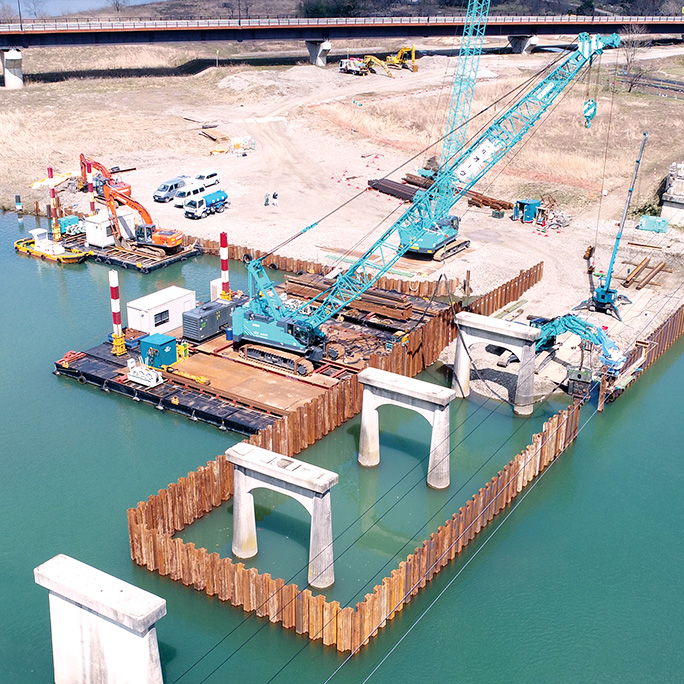
In this method we use vibratory piling equipment for driving in and extracting piles by transmitting forced oscillation to the piles and steel sheet-piles. In this process resistance and abrasion resistance are both temporarily and rapidly diminished; hydraulic vibratory hammers hung from the crane pound the piles. Vibratory hammers and cranes are selective in size according to the conditions of your site in order to complete your project economically.
-
Center hole vibratory hammer method (CHV method)
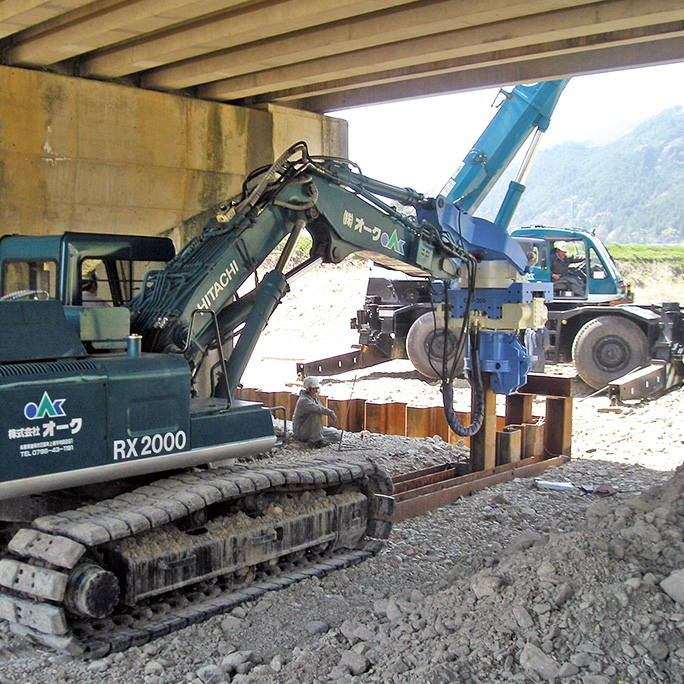
This vibratory hammer shows great performance as an attachment of hydraulic excavator. A steel sheet pile or H-steel pierced in the center of the vibratory hammer is caught firmly by the specially crafted clamp. With this CHV Method, the height of the pile is freely set, whereas with the conventional vibratory hammer of excavator mounted type, it was limited to the height of the hydraulic excavator used for the base machine. In short you can use all the length of whichever pile chosen for the construction under bridge clearance or overhead wire without considering the height of the vibratory hammer.
-
Revolution of end bearing capacity pile control
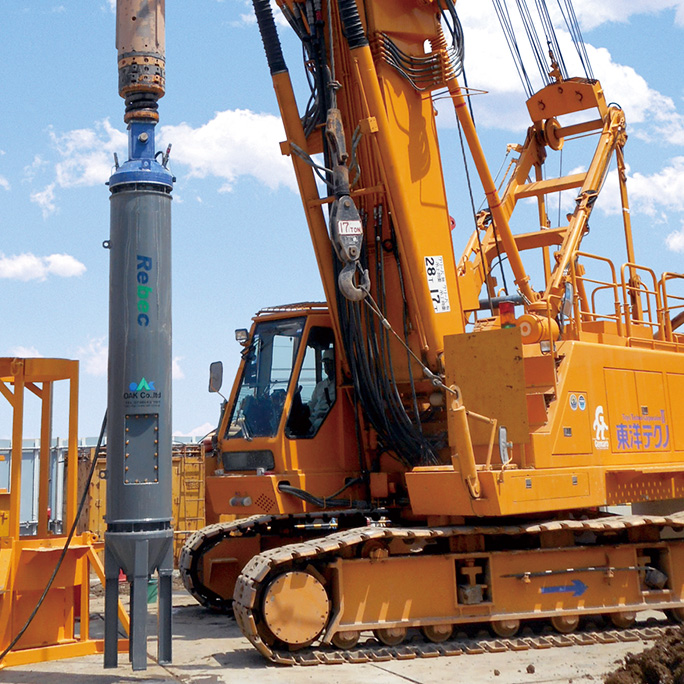
Calculation of the end bearing capacity is possible in the installation process of the cast-in-place pile.
-
End load test for cast-in-place pile in situ
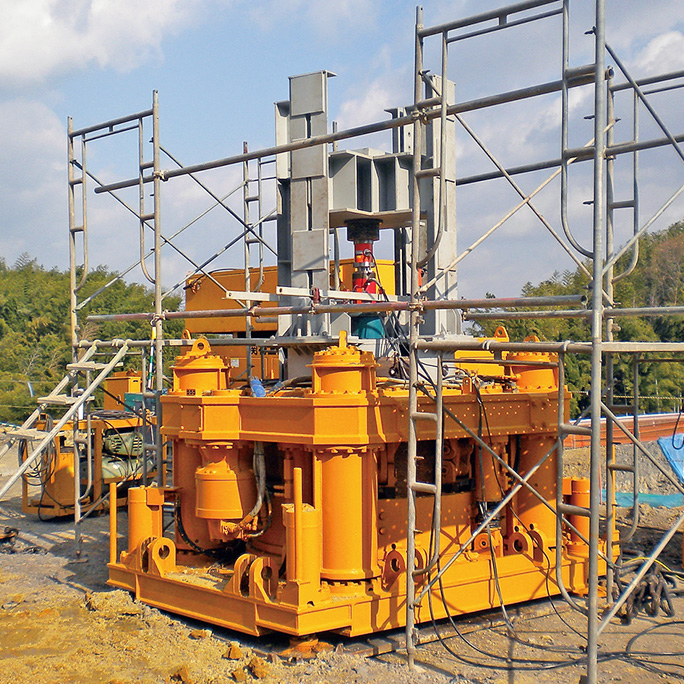
This technology is to inspect the foundation strength at the excavated bottom surface after the drilling hole of the cast-in-place pile has been created. In this test the principle of plate loading test for ground is applied. This technology features application of the deadweight of an all circumstance rotary excavator and casing as well as the extraction resistance force of casing as reaction force.
Conventionally, large-scale tests have been done after the pile construction, but this technology of small scale has a good cost performance and makes the inspection of the foundation strength viable before the pile construction.
-
Tire technique of antivibration (TI-TAN technique)
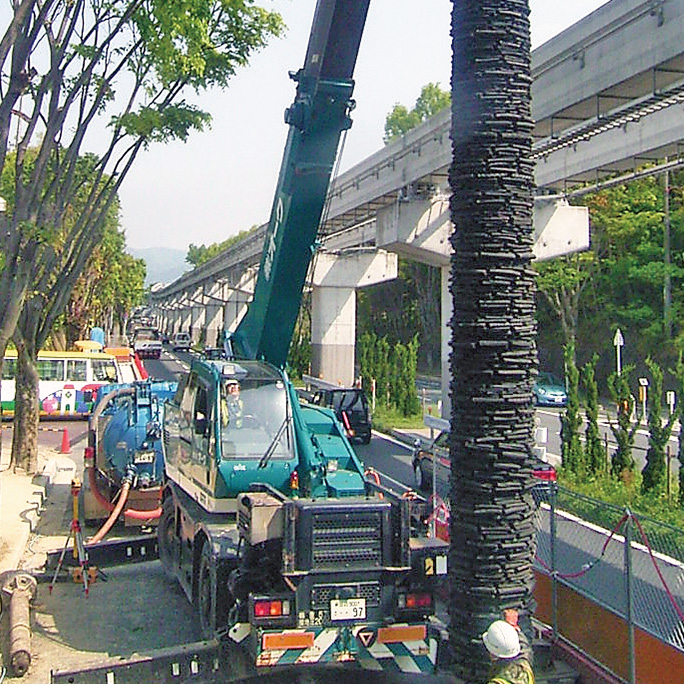
Vibrations created by roads, trains, construction and factory machines has serious impact on civil life and precision machines.
In recent years, due to the increased vibration phenomenon in the weak surface layer ground and resonance phenomenon even the small vibrations have been producing claims, thereby, leading to more demand for other antivibration measures than the conventional vibration-proof walls. In accordance with this demand we developed "Ti-TAN Technique"together with Ritsumeikan University using waste tires.
With this new technique we can diminish environmental vibration by installing vibration-proof walls of waste tires. Also, this technique is effective in decreasing CO2 by reusing waste tires without incinerating, whose annual quantity amounts to 1 million tons in Japan.
-
Measurement certification business
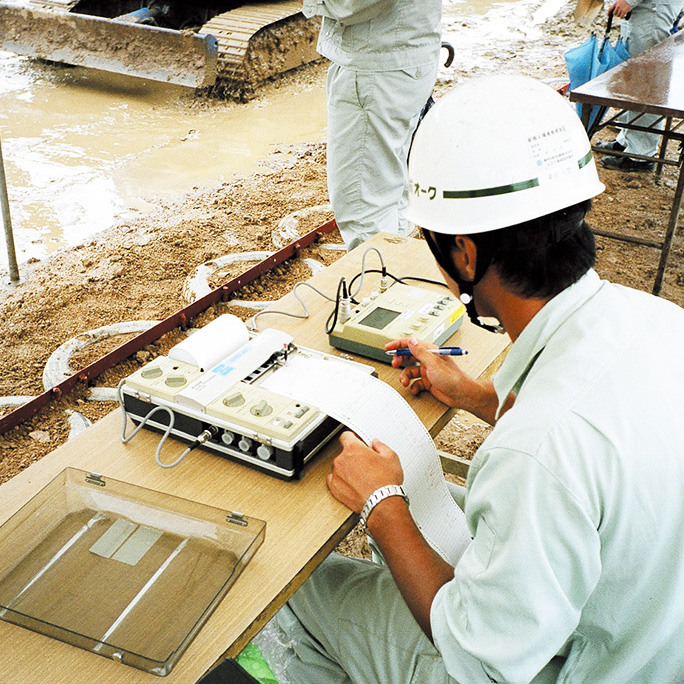
We issue measurement certifications on noise and vibration.

